Looking for the best DSLR camera for beginners? We’ve tested and ranked all of the top entry-level DSLR cameras for this list, to help you decide. So whether you want to switch from a smartphone or upgrade from a compact, you’ll find a DSLR below to suit your budget and requirements.
Smartphones and mirrorless cameras might be better than ever, but DSLR cameras offer a unique experience for photographers who are just getting started. They’re more powerful and versatile than any mobile phone, and they promise better handling, control and battery life than most mirrorless models. And if you like the idea of a true optical viewfinder, you’ll only get one with a DSLR.
What’s the difference between basic DSLR cameras and more advanced models, like the Canon EOS 90D? All DSLR cameras offer a lot of flexibility and features for first-timers, but entry-level options like the Canon EOS Rebel T7i / EOS 800D are likely to have fewer advanced modes or custom controls.
Canon and Nikon remain the biggest names in the DSLR market. They’ve been around for a while, which means they offer a broad choice of both DSLR models and native lenses to match. But we haven’t limited our list to the two major players or their most recent releases: the buying guide below covers a range of excellent entry-level cameras from other brands, as well as a number of older options that promise fantastic value.
Most manufacturers are now focusing more on the mirrorless market – Canon axed the beginner-level 7D line last year after just two iterations – but this actually works in favor of first-time buyers, with prices falling on older but still capable DSLR cameras. Be sure to read the whole list below to get a complete picture of what’s available before deciding the best beginner DSLR for you.
Best beginner DSLRs 2020 at a glance:
- Nikon D3500
- Canon EOS Rebel T7i / EOS 800D
- Nikon D5600
- Canon EOS 90D
- Canon EOS Rebel T7/ 2000D / EOS 1500D
- Canon EOS Rebel SL3 / EOS 250D / EOS 200D Mark II
- Canon EOS Rebel T100 / 4000D
- Pentax K-70
- Canon EOS 80D

The Best DSLRs for beginners in 2020:
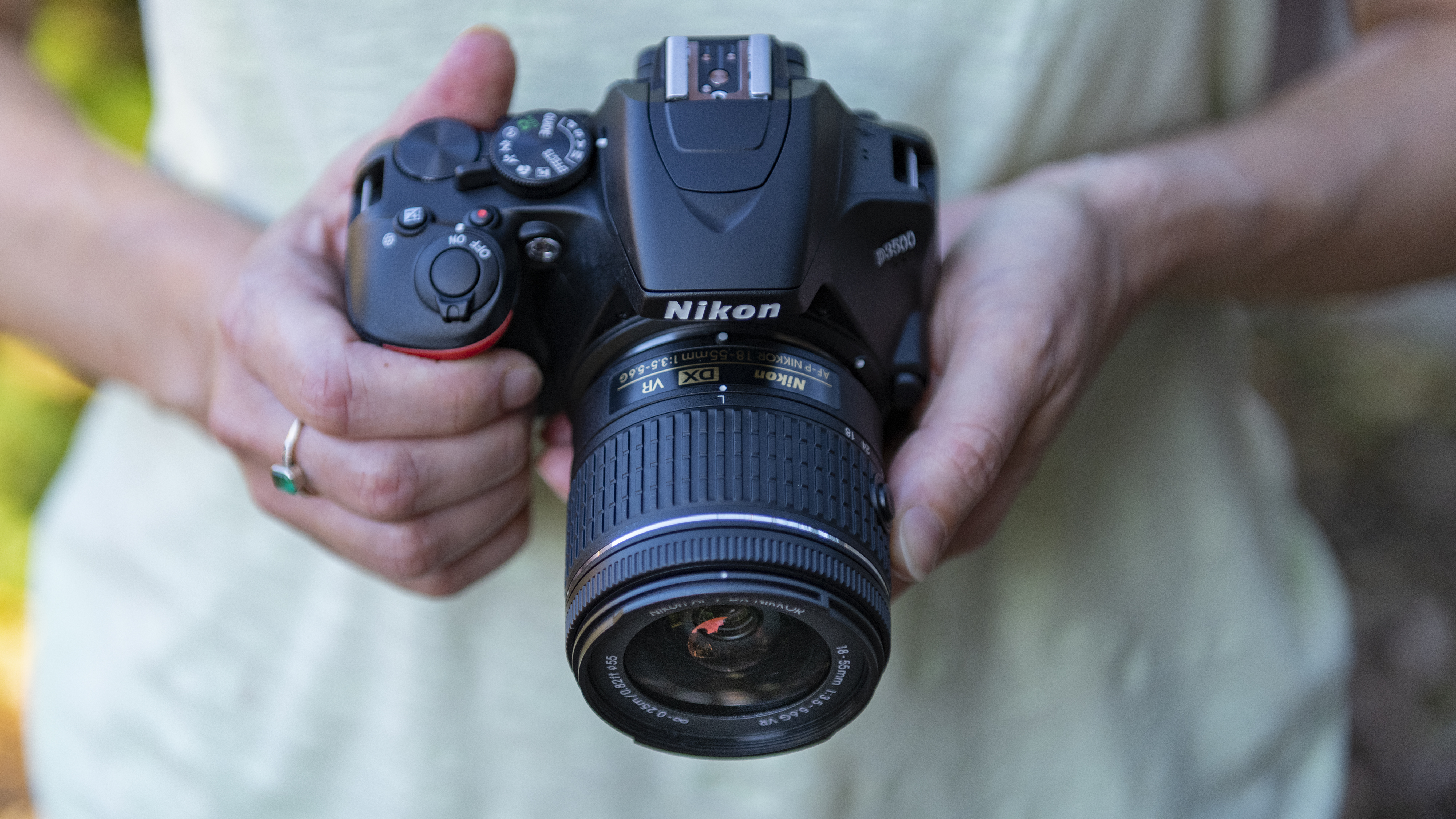
1. Nikon D3500
Not the flashiest camera here, but we reckon it's the best right now
Sensor: APS-C CMOS | Megapixels: 24.2MP | Lens mount: Nikon DX | Screen: 3-inch, 921,000 dots | Continuous shooting speed: 5fps | Max video resolution: 1080p | User level: Beginner
Nikon may not have announced any new entry-level DSLRs for a while, but the D3500 remains an excellent option for those new to photography. It picks up from where the D3400 left off, but with a handful of extra perks. Unlike power-hungry mirrorless models, the major advantage of this camera is battery life. You can keep going for 1,550 images between charges, which is way ahead of most other DSLRs, while the 24MP sensor delivers excellent image quality. Nikon has also revised the body and control layout, not only to make it nicer to handle but easier to use too, while the Guide Mode takes the first-time user's hand and walks them through all the key features in a way that makes everything easy to understand. We love it – and if you're just getting started, we reckon you will too.
- Read our in-depth Nikon D3500 review


2. Canon EOS Rebel T7i / Canon EOS 800D
About to be superseded, but will continue to offer great value
Sensor: APS-C CMOS | Megapixels: 24.2MP | Lens mount: Canon EF-S | Screen: 3-inch articulating touchscreen, 1,040,000 dots | Continuous shooting speed: 6fps | Max video resolution: 1080p | User level: Beginner/enthusiast
Canon’s EOS Rebel T7i (known as the EOS 800D outside the US) is on the cusp of being replaced: in fact, we’re just about to test its successor, the Rebel T8i / 850D.
Early impressions suggest the new model is more evolution than revolution, but the upgrades should make it an excellent entry-level choice – think 4K video, better low-light focusing and Live View focus points. It also gets Canon’s latest Digic 8 chip for 7fps burst shooting, improved metering and better noise-handling.
Does that make the 800D a write-off? Not at all. If you’re unlikely to shoot 4K footage or frequently focus using Live View, the older option remains a solid all-rounder for those who like the larger handling of a DSLR. Its excellent touchscreen is user-friendly, while the 24.2MP sensor still delivers impressive overall image quality.
Better yet, the price is only likely to fall further now that the 850D has arrived – making it even better value for first-time buyers.
- Read our in-depth Canon EOS Rebel T7i / EOS 800D review

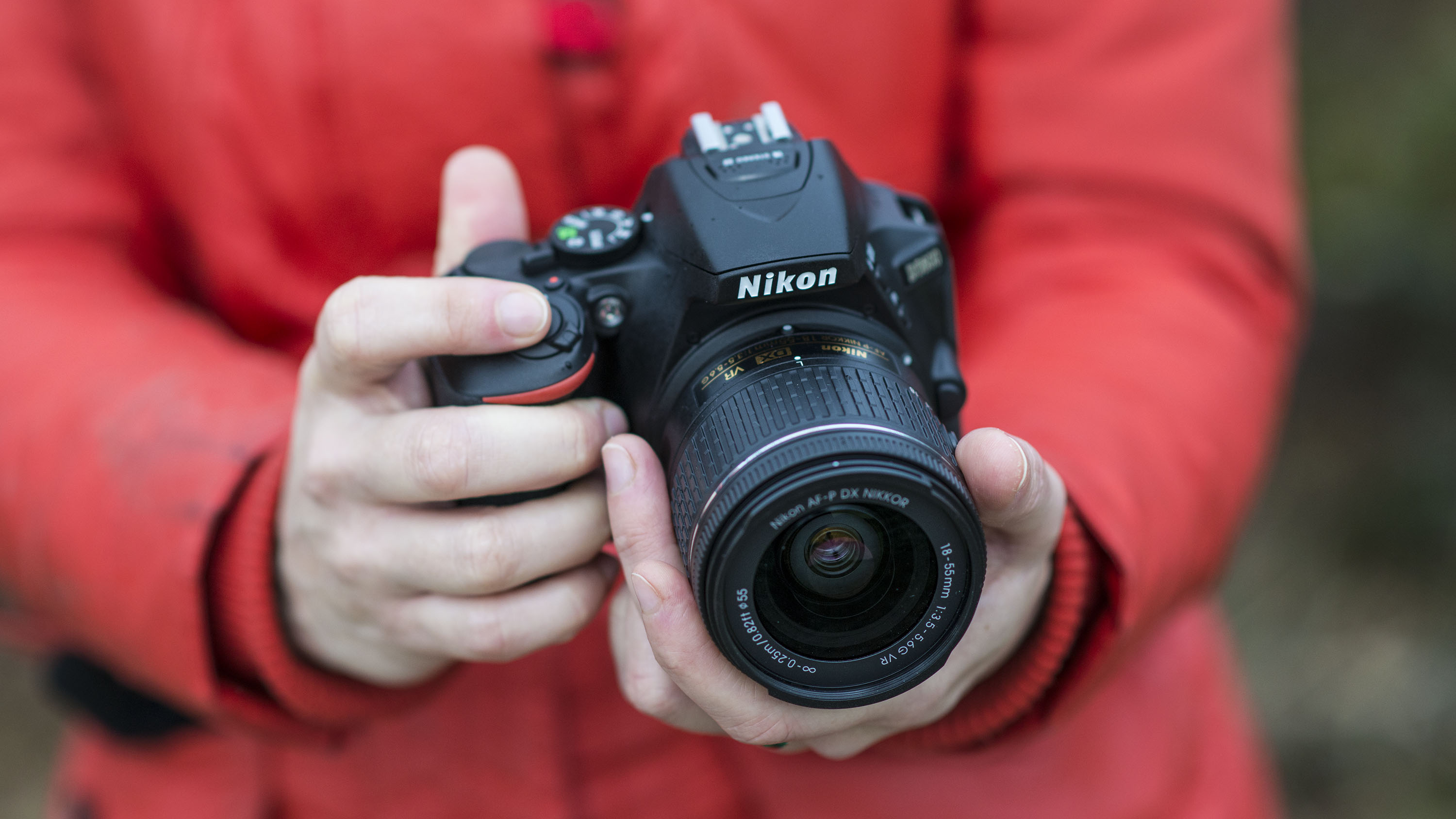
3. Nikon D5600
Need a little more power? The D5600 could be what you're after
Sensor: APS-C CMOS | Megapixels: 24.2MP | Lens mount: Nikon DX | Screen: 3.2-inch articulating touchscreen, 1,040,000 dots | Continuous shooting speed: 5fps | Max video resolution: 1080p | User level: Beginner/enthusiast
Here's another model which is still holding its own against the rise of mirrorless. The D5600 is a step up from the D3000-series models, with a stronger set of specs to rival the likes of the Canon EOS Rebel T7i / EOS 800D (position 2). Key advantages over the D3400 and D3500 include a larger LCD screen, which not only flips out and swivels all the way around to face the front for vlogging, but also responds to touch, together with a more advanced autofocus system, Wi-Fi and a healthy range of additional control on the inside. Sure, you pay a little bit more for the privilege, but if you need a little more growing space it makes sense to go for the D5600 so that it stays with you for years to come.
- Read our in-depth Nikon D5600 review

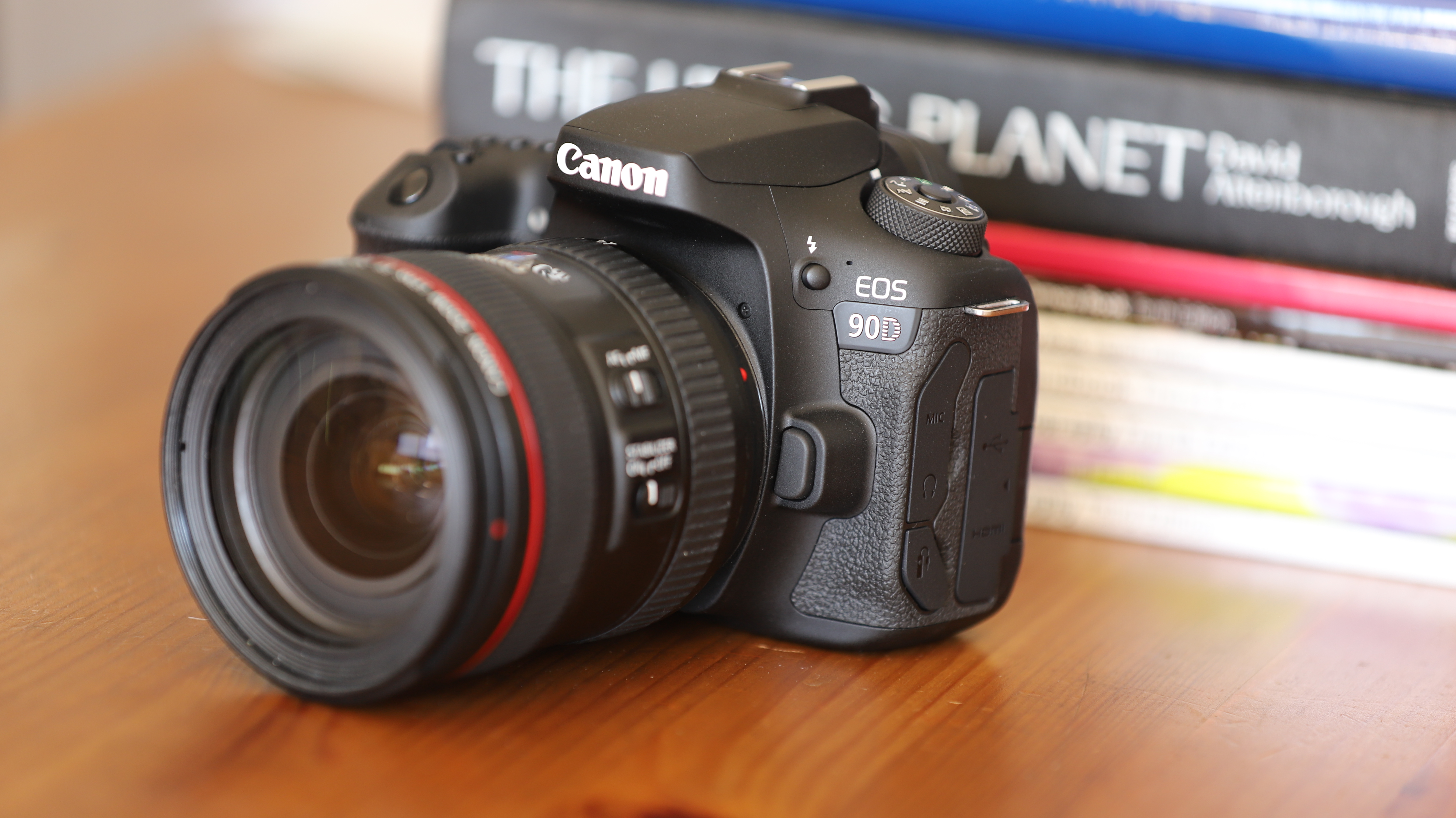
4. Canon EOS 90D
A feature-packed all-rounder that offers lots of room to grow into
Sensor: APS-C CMOS | Megapixels: 32.5MP | Lens mount: EF/EF-S | Screen: 3-inch vars-angle touchscreen, 1,040,000 dots | Continuous shooting speed: 11fps | Max video resolution: 4K/30p | User level: Beginner/enthusiast
Canon’s 90D might be the last enthusiast-level DSLR the company ever makes – and if so, it’s going out with a bang. The versatile 90D packs a high-resolution sensor which, paired with Canon’s Digic 8 imaging engine, offers the enticing prospect of uncropped 4K video at 30fps. Color reproduction is superb and there’s plenty of detail in both stills and video, aided by a new 216-zone metering system – though noise can be an issue above ISO 8000. A deeper grip means the 90D is also really comfortable in the hand, while a joystick makes selecting from the Dual Pixel CMOS AF points a cinch. Battery life is a boon, too, with 1,500 shots possible on a single charge. It's possibly a bit too much camera for an absolute beginner (both in price and features), but there's no doubt it offers a lot of room to grow into. Either way, the 90D proves that DSLRs still have a place in the mirrorless world.
- Read our in-depth Canon EOS 90D review

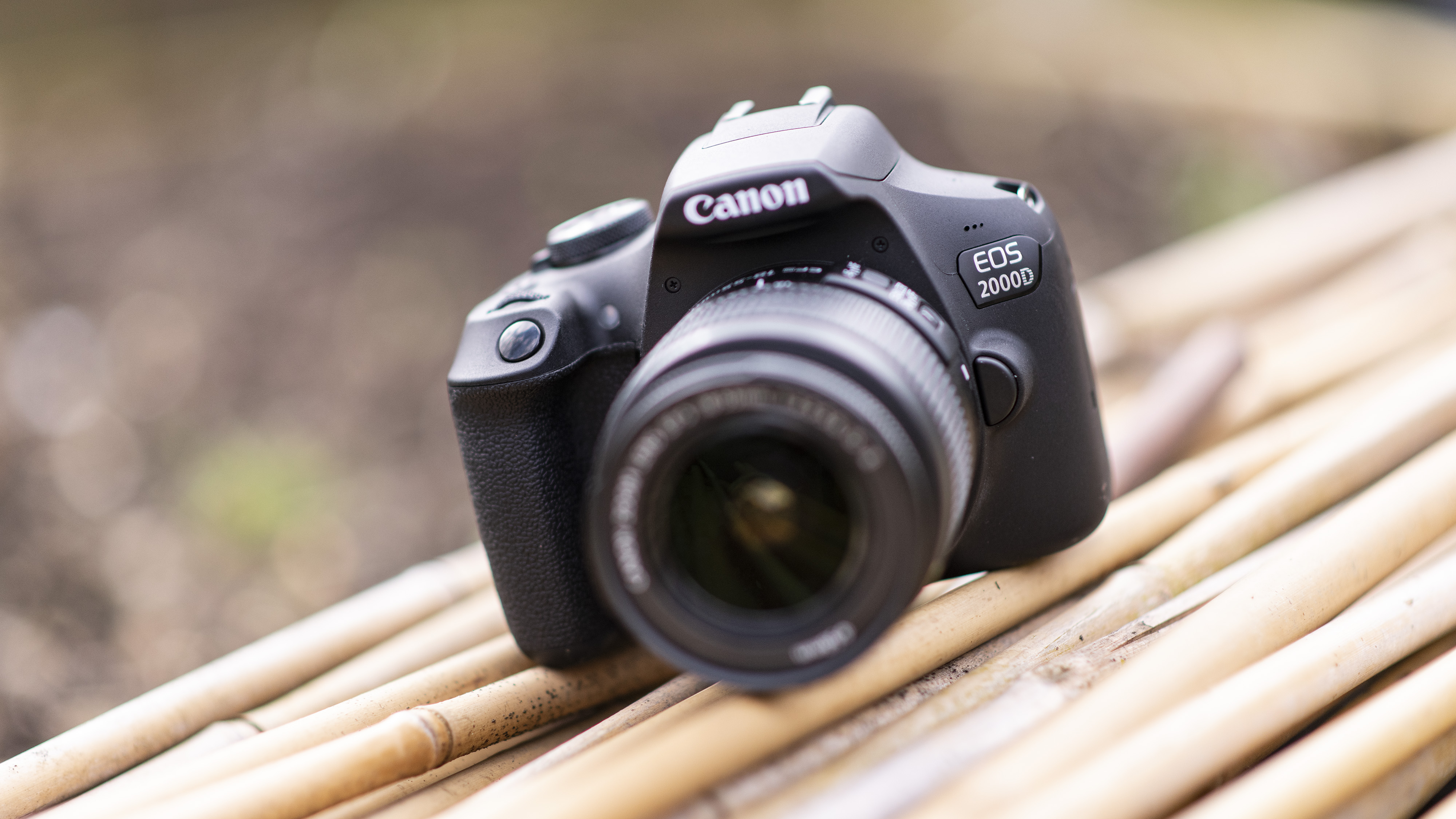
5. Canon EOS Rebel T7 / Canon EOS 2000D
Pick up Canon's no-frills entry-level DSLR at a bargain price
Sensor: APS-C CMOS | Megapixels: 24.1MP | Lens mount: Canon EF-S | Screen: 3-inch, 920,000 dots | Continuous shooting speed: 3fps | Max video resolution: 1080p | User level: Beginner
This is one of the cheapest DSLRs in Canon's current line-up, which also makes it a very cost-effective way to get access to an endless assortment of lenses, flashguns and other accessories. Its low price tag means that it understandably lacks some of the fancy tricks of its bigger brothers – flip-out LCD, 4K video and so on – but there's still a very good level of physical control on offer. And, most importantly, image quality from the 24MP sensor is sound. It's designed very much with its target audience in mind, with a Feature Guide to help you understand everything, and battery life is also better than many mirrorless models at this price point – still a key advantage of DSLRs. Wi-Fi, NFC and Full HD video recording round off the specs, making it a well-rounded first-time option.
- Read our in-depth Canon EOS Rebel T7 / EOS 2000D review

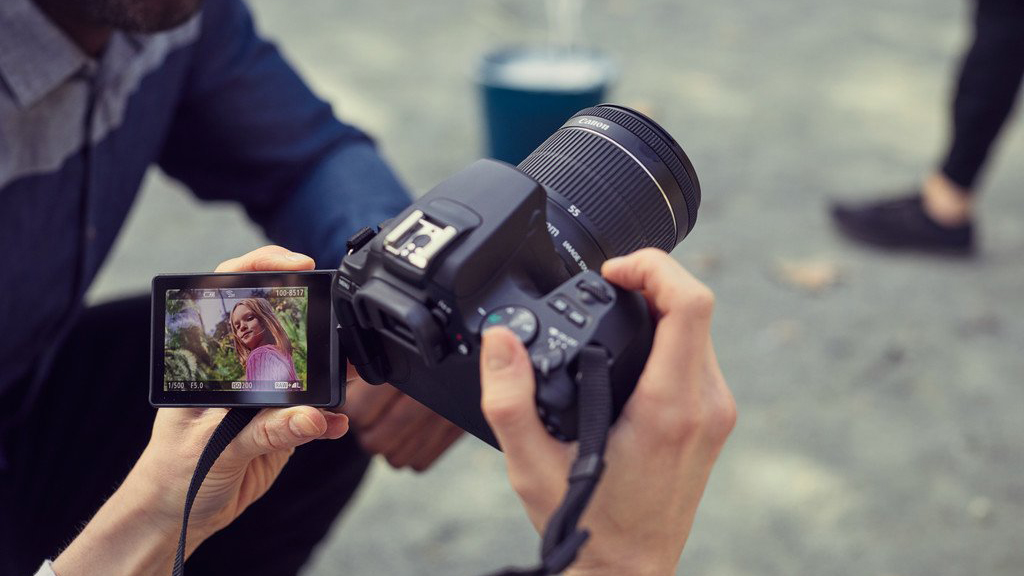
6. Canon EOS Rebel SL3 / EOS 250D
The world's smallest and lightest DSLR with a movable LCD
Sensor: APS-C CMOS | Megapixels: 24.1MP | Lens mount: Canon EF-S | Screen: 3-inch, 1,040,000 dots | Continuous shooting speed: 5fps | Max video resolution: 4K | User level: Beginner
The EOS Rebel SL3, also known as the Canon EOS 250D, is the latest entry-level arrival to this list – indeed it's one of only a handful of beginner models announced in recent years. Like its name suggests, it picks up from where the Rebel SL2 (EOS 200D) left off, adding a fresh processing engine and 4K video recording on top of a collection of smaller extras. There may be lots of competition from mirrorless right now, but if you like the traditional handling of a DSLR – including an optical viewfinder – the 250D is one of the most attractive models available right now.

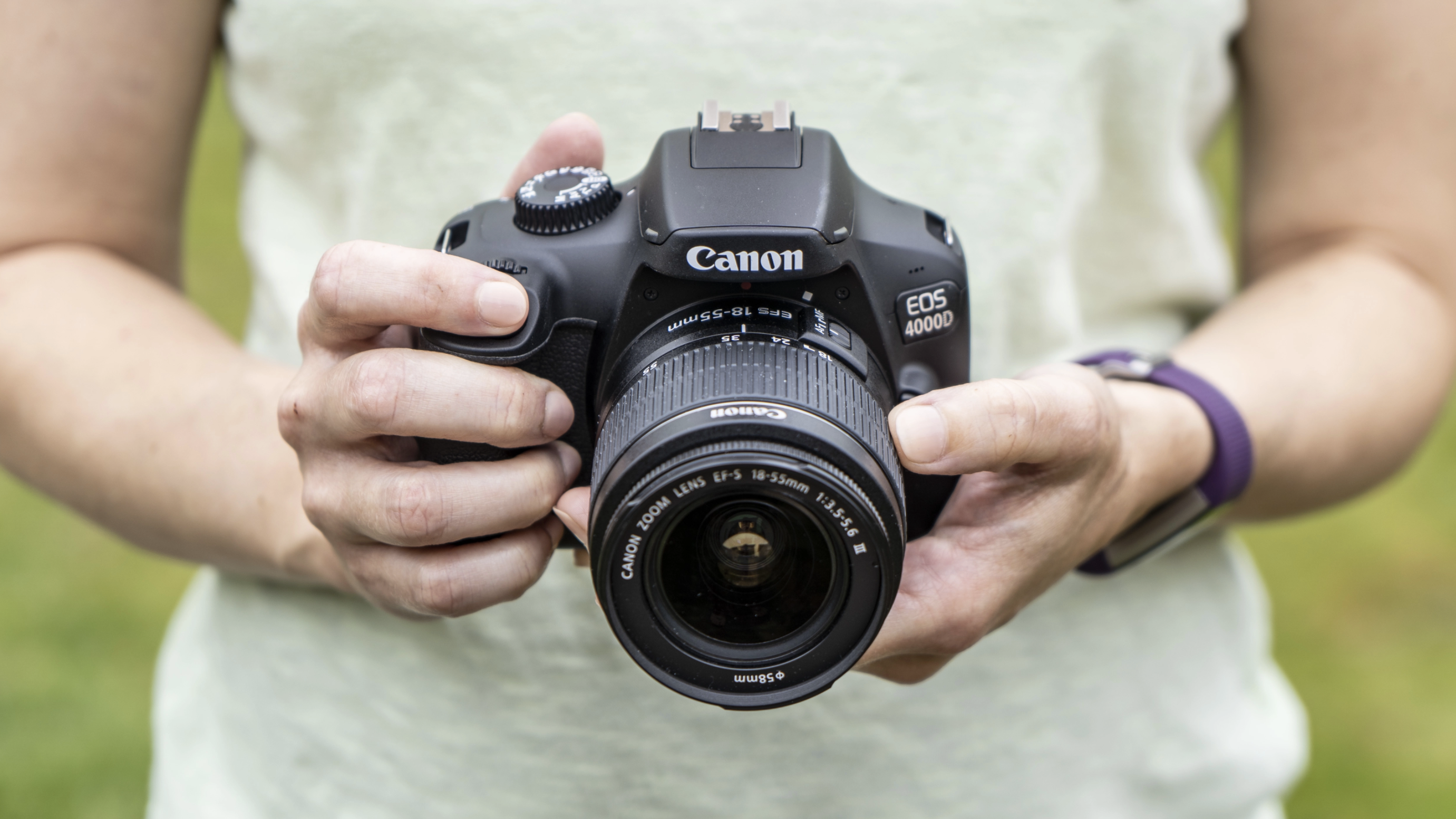
7. Canon EOS Rebel T100 / EOS 4000D
A basic but very affordable option for beginners
Sensor: APS-C CMOS | Megapixels: 18MP | Lens mount: Canon EF/EF-S | Screen: 2.7-inch, 230,000 dots | Continuous shooting speed: 3fps | Max video resolution: 1080p | User level: Beginner
If you’re making your first foray into DSLR ownership, you don’t necessarily need a camera that can do everything. And if you’re looking for something very basic but very affordable, Canon’s 4000D might tick the boxes.
There’s a lot about the 4000D that seems dated alongside the latest entry-level models. The 18MP sensor and DIGIC 4+ processor are both aging, as is the modest 9-point autofocus system, which has been in Canon’s catalogue since 2009. The LCD display likewise feels long in the tooth, with a 2.7-inch diagonal and 230k-dot resolution, while Live View performance is a little sluggish. Finally, the polycarbonate shell feels understandably cheap.
But it’s not all bad: the button layout is easy to navigate for new users, battery life is strong at 500 shots and image quality is solid, with noise handled fairly well. Those upgrading from a smartphone or compact should find results decent, with a fair amount of detail and a good level of saturation, while Picture Style presets enable easy tonal tweaks.
To more experienced buyers, the 4000D will feel like a step back in time, with older components and unremarkable performance. But if affordability is your key criterion, you might be able to look past the limited feature set and see some wallet-friendly potential.
- Read our in-depth Canon EOS Rebel T100 / EOS 4000D review

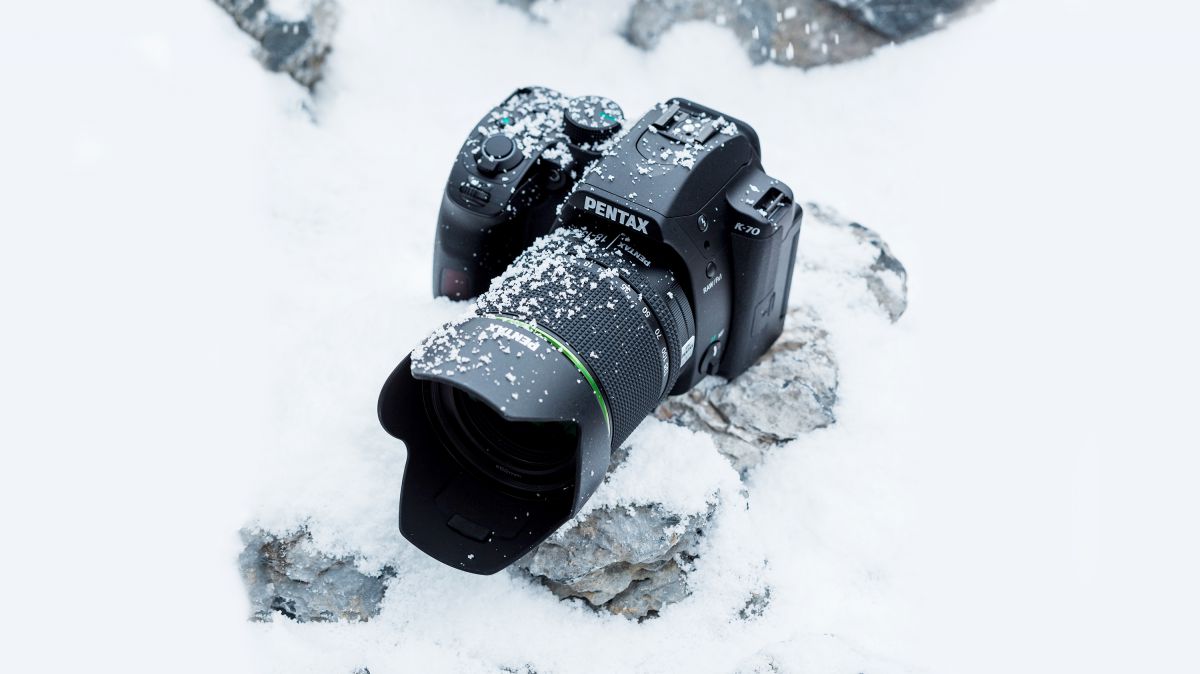
8. Pentax K-70
Rugged and great value – an impressive alternative to the big two
Sensor: APS-C CMOS | Megapixels: 24.2MP | Lens mount: Pentax K | Screen: 3-inch, 921,000 dots | Continuous shooting speed: 6fps | Max video resolution: Full HD | User level: Beginner
Although a couple of years old now, the K-70 remains a good value option for anybody who is not overly bothered by the main two manufacturers . Even better if you have a stash of old Pentax lenses gathering dust in a basement from manual days. It has a very useful articulating screen, while the hybrid live view autofocus system makes it an actual practical alternative to using the viewfinder. Possibly our favourite thing about the K-70 is its tough credentials - something which is typically lacking for entry-level models. If you're keen to take lots of pictures outdoors - such as landscapes - being able to rely on it not to be destroyed by inclement weather is a big bonus. One slight disappointment is the kit lens which is often bundled with the camera – while it offers a much longer focal length than most others here, it can be a little soft in places.

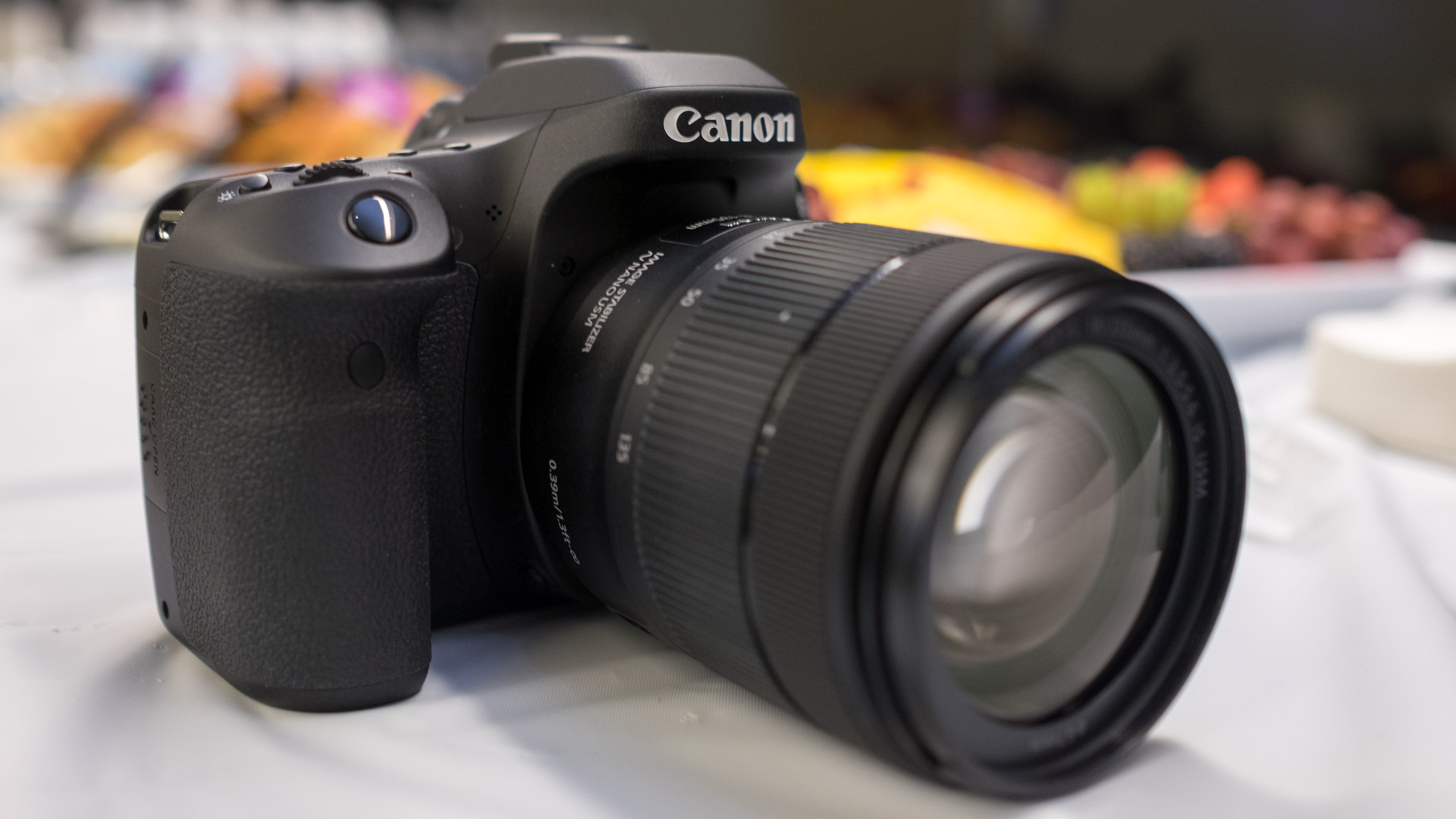
9. Canon EOS 80D
A classic never grows old
Sensor: APS-C CMOS | Megapixels: 24MP | Lens mount: Canon EF-S | Screen: 3-inch, 1,040K dots | Continuous shooting speed: 7fps | Max video resolution: 1080p | User level: Beginner
Sitting on top of Canon's entry-level DSLR pile, the EOS 80D is one of the older cameras from the camera maker, having been around since 2016. Despite that, it's one of the more 'advanced' beginner cameras, thanks to its feature set and specs, including a 24.2MP sensor with a 45-point autofocus system that's actually remarkably reliable. There's a guided menu system that's easy to navigate, and on-board Wi-Fi and Bluetooth to transfer images wirelessly if needed. The only downside is that the kit lens that comes with the shooter is a tad soft around the edges, and we'd recommend buying the body only and a better lens separately.
- Read our in-depth Canon EOS 80D review

Also consider...
None of the above take your fancy? Here's another option to consider.

Canon EOS 77D
A little more control and mid-range features on board
Sensor: APS-C CMOS | Megapixels: 24.2MP | Autofocus: 45-point AF, (all cross-type) | Screen type: 3-inch articulating touchscreen, 1,040,000 dots | Continuous shooting speed: 6fps | Movies: 1080p | User level: Beginner/enthusiast
The EOS 77D is a slightly more advanced beginner DSLR, and it provides a few extra treats for those who feel they may outgrow more basic models before long. While we weren't too excited about it at the time of its release, the fact that it's spent some time on the market now means it can be bought for a much more agreeable price tag. On top of the bones of the EOS 800D, there's a top-plate LCD screen that gives you shooting options at a glance, as well as two control dials to make adjusting options faster. You also get some extras on the inside such as bulb and interval timers. If you can stretch to the EOS 80D that sits just above it, even better – otherwise, this would be a slightly more capable option than its more basic siblings.
- Read our in-depth Canon EOS 77D review

What should you look for when buying a beginner DSLR?
There are three main factors to consider when buying a beginner-friendly DSLR: the camera's size, screen and kit lens options.
If you're trying to learn your way around manual settings like aperture and shutter speed, which is one of the main benefits of a DSLR, then you'll ideally need a model that's small and light. This means you'll be more likely to take it out regularly and master those controls. The most beginner-friendly cameras, like the Nikon D3500 and Canon 250D, tend to be particularly small for DSLRs, so take a close look at those.
Looking to shoot lots of video along with your stills? DSLRs can be a cheap way to get into vlogging too, so make sure you look out for models with a vari-angle screen if you need this. These can help you shoot from different angles and also flip round to the front so you can check your framing while vlogging to camera.
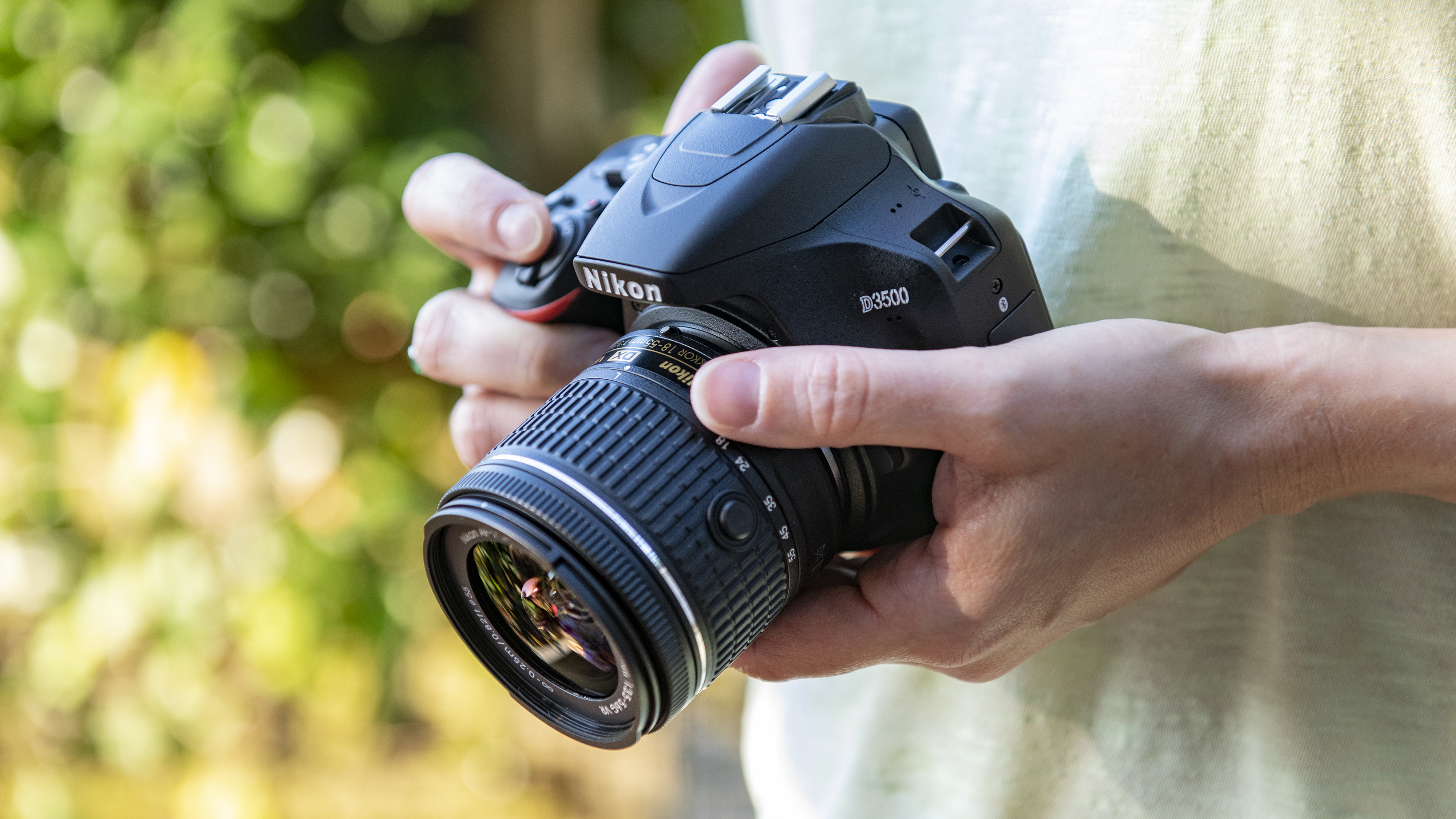
Lastly, you'll want to consider lenses. As a beginner, you'll most likely be starting from scratch, which means it makes more sense to buy your DSLR with a kit lens. A word of warning here, though – most manufacturers offer two types of kits lens, one with image stabilization and one without. It's best to go with the image-stabilized kit lens, as you'll be able to shoot sharper images at slower shutter speeds.
While an 18-55mm kit lens will be more than enough to get you started, one of the big benefits of DSLRs is being able to add extra lenses for different kinds of photography. For example, wide-angle and telephoto zoom lenses, as well as high-quality macro options. You can also add a flashgun and other accessories, which help you to make the most of whatever types of photography you're into.
Still not entirely sure whether you need a DSLR or a mirrorless camera? Don't forget to check out our Mirrorless vs DSLR cameras: 10 key differences guide. Alternatively, if don't quite know what kind of camera you need at all, then read our easy-to-follow guide to camera types: What camera should I buy?
Should you buy a mirrorless camera over a DSLR? Watch our guide video below to learn more:
- Best camera
- Best DSLR
- Best mirrorless camera
- Best 4K camera
- Best full-frame camera
- Best compact camera
- What camera should I buy?
- Mirrorless vs DSLR: 10 key differences
- Camera rumors
- Turn your snaps into a beautiful photo book - we've picked out the best

from TechRadar - All the latest technology news https://ift.tt/2MvcKuG
via IFTTT
0 التعليقات: